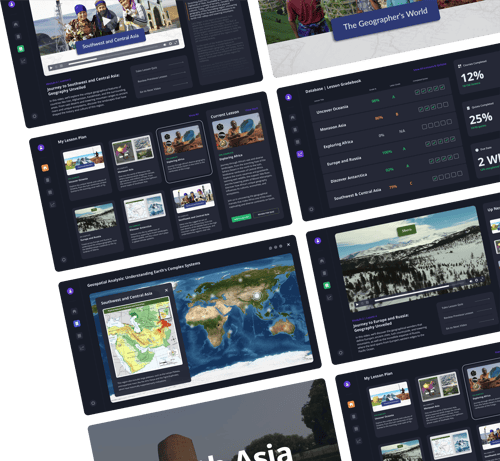Organizations and training leaders are embracing hybrid learning models that combine traditional learning with elearning. Microlearning has emerged as a favored option for training teams and their learners, because microlearning delivers small, bite-sized bursts of information to learners, revolutionizing how employees acquire new skills, upskill, and build confidence. Let's explore the top benefits of microlearning, discover helpful examples, and answer FAQs.
What is Microlearning?
Microlearning is an elearning strategy designed to increase learning outcomes with bite-sized interactive training on any device. It is hyper-focused on building specific skill sets. In five-minute short bursts, microlearning uses quizzes, interactive elements, and more to educate learners on a specific topic. Learners can select e-learning content that’s either sequential or out-of-order to learn or relearn a concept quickly.

What are the benefits of microlearning?
Many learning and training leaders have included a microlearning strategy in their broader learning strategy because of the huge retention, engagement, and completion rate benefits.
Rather than long-form synchronous training, microlearning is self-paced, just-in-time learning that can help learners develop new skills, upskill, and decrease the forgetting curve that can happen after traditional training.
It fosters continuous learning and emphasizes a learning culture, with an added measurement opportunity for training teams to gauge the need for employee performance support.
In short: microlearning modules have proven to be an effective learning format to supplement traditional learning.
-
Flexibility: Many training leaders cite "providing training anytime, anywhere" as a key advantage of microlearning. This flexibility allows learners to access content at their convenience, whether they're at home, in transit, or at work.
On-demand, mobile training is what makes microlearning so effective compared to other learning formats.
-
Improved Retention: Microlearning combats “the forgetting curve,” (coined by Hermann Ebbinghaus) which shows the rate at which people forget information if there’s no attempt to retain it.
By delivering information in small, easily digestible chunks, microlearning enhances learners' ability to retain and recall information effectively.
-
Time Efficiency: A report by the Association for Talent Development (ATD) found that microlearning modules are typically 50% shorter than traditional training sessions. This time efficiency enables learners to acquire new skills or knowledge without investing extensive time, resulting in higher productivity and faster skill acquisition.
-
Engagement: Studies have shown that incorporating gamification elements into microlearning can increase engagement levels by up to 50%. By adding features like quizzes, assessments, leaderboards, and rewards, organizations can create an interactive learning experience that motivates learners to actively participate and progress.
Many employees find training too long and too boring. Microlearning addresses both issues effectively.
-
Personalization: Many learners agree that they would be more engaged in learning if it were personalized to their needs. Microlearning can deliver a personalized experience because users select the modules that are most pertinent to them. Much like browsing podcast episodes, learners select relevant and engaging material tailored to their immediate need or interest.
-
Cost-Effectiveness: By hosting content digitally on devices and eliminating the dependency on instructor-led training, organizations can allocate their training budgets more efficiently while delivering high-quality elearning experiences to employees.
-
Continuous Learning Culture: A Zippia research study reported that 45% of employees would stay at a company longer if it invested in their career development. Microlearning fosters a culture of continuous learning by offering regular, bite-sized opportunities for skill development. This encourages employees to self-improve and adapt to evolving industry trends seamlessly.
-
Real-Time Feedback: Research shows that immediate feedback can lead to increased improvement in learning outcomes. Microlearning platforms facilitate real-time feedback through interactive quizzes, simulations, and assessments, allowing learners to gauge their progress and address areas for improvement promptly.
-
Scalability: As organizations grow, the demand for training and development increases exponentially. Microlearning provides a scalable solution that can adapt to varying needs and audience sizes. Whether training a small team or an entire workforce, microlearning ensures consistency and effectiveness across all levels of the organization.
You can expand your learning strategy with just-in-time training that allows learners to train on their smartphones, tablets, or browsers. Training no longer needs to be a standalone event, but rather on-demand, continuous learning that dramatically improves outcomes.
Also, you can pair microlearning with AI-enhanced training to add new levels of interactivity and scale personalized feedback.
What are microlearning examples?
Elearning training like onboarding, short videos, point-of-view simulations, animation explainers, and technical training quizzes all benefit from the microlearning format. Microlearning can supplement in-person, traditional employee training when learners are in the field.
Here are some microlearning examples.
 Skill-Building and Knowledge Assessment.
Skill-Building and Knowledge Assessment.

Safety and Competency Training.

Leadership Development Courses.

Frontline Onboarding.

Soft Skills Development.
Microlearning Limitations
Not for in-depth, complex topics
Because microlearning is designed to be consumed during short periods of time, it’s not well-suited for highly complex concepts that simply require more time to understand.
Must create high-quality content and structure
Microlearning isn’t effective if it’s just PowerPoint delivered on mobile. Effective microlearning takes the best of video production, illustrative design, interactive learning, and learning design to intentionally create dynamic content that is highly effective, enjoyable, and quick. There’s art and science to increasing retention and engagement.
Microlearning Best practices

Be time sensitive
Microlearning helps fight short attention spans with bite-sized learning, so be mindful of how long each module takes to complete. It’s best to have more but shorter modules, than fewer modules but longer. Strong learning design can help properly chunk your microlearning content into approachable nuggets.
Optimize for various devices
Think through your end user’s day. Format your microlearning courses based on the devices that are the most accessible to them. Microlearning takes advantage of mobile learning, which makes training easier for employees during their workflow.
Measurement
Decide what you want to specifically measure. Is it completion rate? Speed of completion? Certifications by user? Choose the metrics that matter, so trackable actions can be included in the format.
More than just multiple-choice
Microlearning is more than including multiple-choice questions. Incorporate drag and drop, 360 environments, memory games, and more. These gamification elements make training sessions more fun, interactive, and effective for your learners.
Repurpose/repackage existing content
You don’t have to start from scratch. You can refresh the look, feel, and presentation of existing content that is still sound, correct, and reliable. Microlearning can repackage tried-and-true training programs but with a modern delivery that skyrockets retention.
Microlearning platform, LMS Hosted or Browser-based app?
No, you don’t need to buy an extra microlearning platform to provide high-quality, engaging microlearning content. Through your company’s Learning Management System (LMS) and even browser-based apps, learners can access microlearning training on mobile devices or company-issued tech. Before adding one more platform to your learning stack, explore vendors who can create microlearning without the additional expenses of platforms and licenses per user.
How long does it take to create a microlearning course?
While the amount of time for every microlearning project differs based on the number of modules, length, and complexity, it can take 4-8 weeks to produce microlearning courses. A savvy training company will create templates that can take the project less time to complete. One large factor is whether the learning content has already been completed.
How much does microlearning content cost?
Much like the production timeline, cost is dependent on all the same factors like length, complexity, and number of modules. Ensure you get a separate quote on just the content. Some companies may try to sell you microlearning platforms or microlearning tools, even develop separate apps to host your content. Be sure to distinguish between content and platforms. Reach out to NextThought for a clear, transparent pricing breakdown on microlearning content.
Why partner with NextThought for microlearning videos?
NextThought has produced corporate training and employee training for some of the world’s top organizations. We have the unique ability to take learning objectives, existing or new pieces of content, and complex subject matter to create highly engaging, effective microlearning content that learners love. We’re known for learning experiences that increase retention and impact organization-wide education. Reach out to us to get started on your microlearning project today.

NextThought team
NextThought transforms workplace learning through creative technology and engaging media. We're fortunate to partner with some of the top organizations in the world to make their educational training content remarkable and effective.
Recent Posts

What Can Go Wrong With A Custom Training Project? (And How NextThought Makes It Go Right)
August 5, 2025 1 Min Read

How Much Does a Custom Content Development Project Cost?
July 9, 2025 3 Min Read

The 6 Best Educational Video Production Companies (2025)
February 28, 2025 9 Min Read
